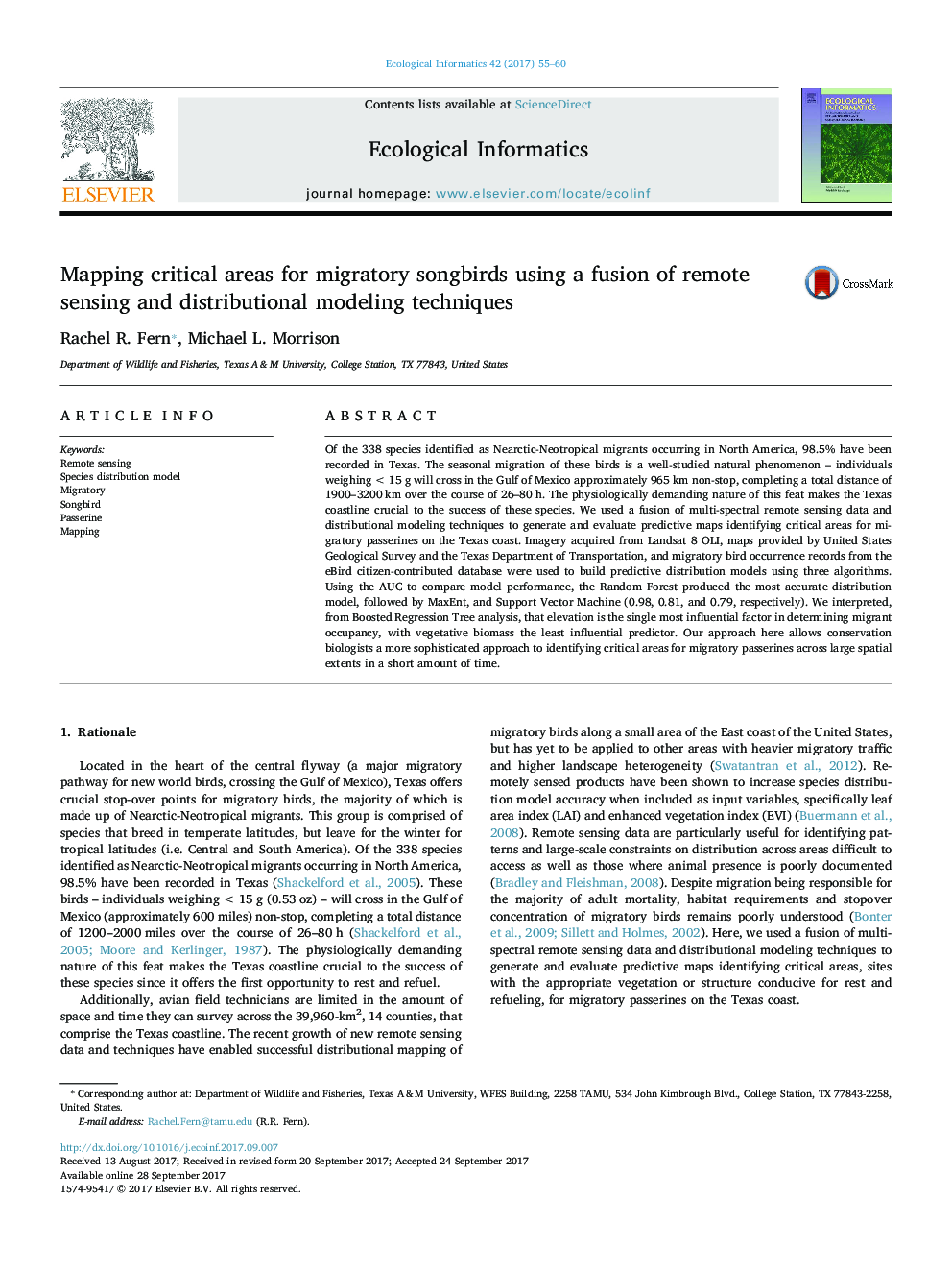| کد مقاله | کد نشریه | سال انتشار | مقاله انگلیسی | نسخه تمام متن |
|---|---|---|---|---|
| 5741886 | 1617192 | 2017 | 6 صفحه PDF | دانلود رایگان |
- We used a fusion of techniques to identify critical areas for migratory passerines.
- Machine-learning models were applied to migratory songbird distribution on the Texas coast.
- All models suggest elevation is the most influential factor affecting distribution.
- We incorporated large-scale remote sensing data into species occurrence predictions
- Results incite new investigation into environmental requirements of trans-gulf migrants.
Of the 338 species identified as Nearctic-Neotropical migrants occurring in North America, 98.5% have been recorded in Texas. The seasonal migration of these birds is a well-studied natural phenomenon - individuals weighing <Â 15Â g will cross in the Gulf of Mexico approximately 965Â km non-stop, completing a total distance of 1900-3200Â km over the course of 26-80Â h. The physiologically demanding nature of this feat makes the Texas coastline crucial to the success of these species. We used a fusion of multi-spectral remote sensing data and distributional modeling techniques to generate and evaluate predictive maps identifying critical areas for migratory passerines on the Texas coast. Imagery acquired from Landsat 8 OLI, maps provided by United States Geological Survey and the Texas Department of Transportation, and migratory bird occurrence records from the eBird citizen-contributed database were used to build predictive distribution models using three algorithms. Using the AUC to compare model performance, the Random Forest produced the most accurate distribution model, followed by MaxEnt, and Support Vector Machine (0.98, 0.81, and 0.79, respectively). We interpreted, from Boosted Regression Tree analysis, that elevation is the single most influential factor in determining migrant occupancy, with vegetative biomass the least influential predictor. Our approach here allows conservation biologists a more sophisticated approach to identifying critical areas for migratory passerines across large spatial extents in a short amount of time.
Journal: Ecological Informatics - Volume 42, November 2017, Pages 55-60
